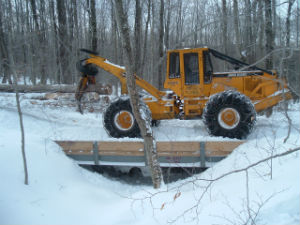 The Vermont Agency of Natural Resources owns approximately 360,000 acres of land in 200 towns across Vermont, with parcels ranging in size from several acres to thousands. These state lands are integral to the larger natural communities that sustain and vitalize Vermont’s economy, natural resources, and communities. Management of this diverse Vermont resource focuses on both current and future forest values and strives to balance the elements of forestry with sustainable human usage.
The Vermont Agency of Natural Resources owns approximately 360,000 acres of land in 200 towns across Vermont, with parcels ranging in size from several acres to thousands. These state lands are integral to the larger natural communities that sustain and vitalize Vermont’s economy, natural resources, and communities. Management of this diverse Vermont resource focuses on both current and future forest values and strives to balance the elements of forestry with sustainable human usage.
Forest management activities on Vermont state lands are all-inclusive, with a big-picture approach to sustainability. This sustainable forest management seeks to be socially acceptable, economically viable, and ecologically sound while protecting the collective uses of publicly owned forests. Management activities integrate the economics of forestry, silvicultural practices, and an ecosystem-based approach to support a thriving forest products industry, abundant recreational opportunities and balanced ecosystems.
Forest management on Vermont state lands provides exemplary practices with the intention of preserving Vermont’s natural beauty, soil productivity, water quality, and forest benefits such as maple sugar production. Practices include recreational trail maintenance and construction, commercial timber production, road maintenance and construction, prescribed fires, invasive plant and pest control, tree planting, and habitat enhancement.
